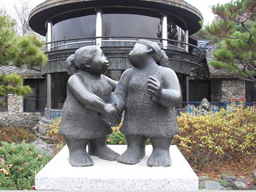
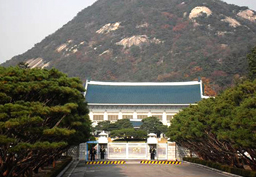
Blue House
Cheong Wa Dae (translation: The House of the Blue Roof Tiles or the Blue House, Office of the President of the Republic of Korea) is the executive office and official residence of the South Korean head of state, the President of the Republic of Korea. Both the English and Korean names refer to the building's blue-green roof. The Korean name has the literal meaning "house of the blue roof tiles." Cheong Wa Dae is in fact a complex of buildings, built largely in the traditional Korean style with some modern elements
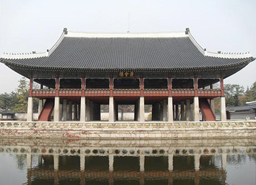
Gyeongbok Palace
Gyeongbok Palace located at the north end of Sejongno Street was first built in 1395 by the founder of the Choson Kingdom. It was burned during the Japanese invasion of 1592, and it was rebuilt in 1868. Kunjongjon, the largest and most impressive building in the palace, served as the throne room and audince hall.
Kyonghoeru, a spacious two-story pavilion, overlooks a picturesque man-made pond just northwest of the throne hall.
It served as a feasting hall for gatherings of royal ministers and diplomats, Hyangwonjong, a secluded pavilion nestled in the middle of a lotus pond at the northern end of the palace complex, is where the royal families could enjoy special private occasions.
Visitors will be interested in the The National Folk Museum in the Kyongbok Palace complex. It is located next to the palace and shows the religious rituals, housing, household tools and implements, food, and social dynamics of traditional Korean life.
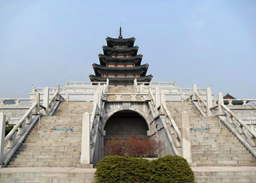
Folklore Museum
This is the one of the finest museum you can see Korean real way of life.
And there are various activities which provides people who want to learn more about the Korean culture.
Closed: Tuesdays and New Year's Day
1st Floor - Exhibition rooms, auditorium, audio-visual folklore room, special exhibition room
2nd Floor - Office, seminar room
3rd Floor - Reference room, folk craft room, office
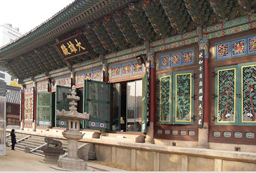
Chogyesa Temple
Jogyesa is the chief temple of the Jogye Order of Korean Buddhism. It thus plays a leading role in the current state of Seon Buddhism in South Korea. The temple was first established in 1395, at the dawn of the Joseon Dynasty; the modern temple was founded in 1910 and initially called "Hwanggaksa." The name was changed to "Taegosa" during the period of Japanese rule, and then to the present name in 1954.
Jogyesa is located in Gyeonji-dong, Jongno-gu, in central Seoul. Natural monument 9, an ancient white pine tree, is located within the temple grounds.
Jogyesa came to the attention of the international news media in December, 1998 due to several monks occupying the temple in a power struggle between factions of the Jogye Order. In the end, riot police were called in to take control of the temple and oust the protestors after they had occupied the building for more than 40 days

Blue House
Cheong Wa Dae (translation: The House of the Blue Roof Tiles or the Blue House, Office of the President of the Republic of Korea) is the executive office and official residence of the South Korean head of state, the President of the Republic of Korea. Both the English and Korean names refer to the building's blue-green roof. The Korean name has the literal meaning "house of the blue roof tiles." Cheong Wa Dae is in fact a complex of buildings, built largely in the traditional Korean style with some modern elements
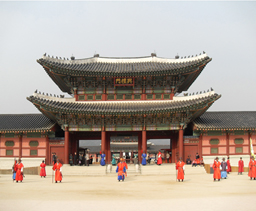
Gyeongbok Palace
Gyeongbok Palace located at the north end of Sejongno Street was first built in 1395 by the founder of the Choson Kingdom. It was burned during the Japanese invasion of 1592, and it was rebuilt in 1868. Kunjongjon, the largest and most impressive building in the palace, served as the throne room and audince hall.
Kyonghoeru, a spacious two-story pavilion, overlooks a picturesque man-made pond just northwest of the throne hall.
It served as a feasting hall for gatherings of royal ministers and diplomats, Hyangwonjong, a secluded pavilion nestled in the middle of a lotus pond at the northern end of the palace complex, is where the royal families could enjoy special private occasions.
Visitors will be interested in the The National Folk Museum in the Kyongbok Palace complex. It is located next to the palace and shows the religious rituals, housing, household tools and implements, food, and social dynamics of traditional Korean life.

Folklore Museum
This is the one of the finest museum you can see Korean real way of life.
And there are various activities which provides people who want to learn more about the Korean culture.
Closed: Tuesdays and New Year's Day
1st Floor - Exhibition rooms, auditorium, audio-visual folklore room, special exhibition room
2nd Floor - Office, seminar room
3rd Floor - Reference room, folk craft room, office

Chogyesa Temple
Jogyesa is the chief temple of the Jogye Order of Korean Buddhism. It thus plays a leading role in the current state of Seon Buddhism in South Korea. The temple was first established in 1395, at the dawn of the Joseon Dynasty; the modern temple was founded in 1910 and initially called "Hwanggaksa." The name was changed to "Taegosa" during the period of Japanese rule, and then to the present name in 1954.
Jogyesa is located in Gyeonji-dong, Jongno-gu, in central Seoul. Natural monument 9, an ancient white pine tree, is located within the temple grounds.
Jogyesa came to the attention of the international news media in December, 1998 due to several monks occupying the temple in a power struggle between factions of the Jogye Order. In the end, riot police were called in to take control of the temple and oust the protestors after they had occupied the building for more than 40 days
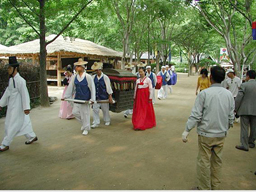
The Korean Folk Village
The Korean Folk Village is a living museum that recreates the lifestyle of Choson Kingdom. Here in reconstructed farm houses, residences of the nobility, and other buildings of several centuries ago.
There are potters, weavers, blacksmiths, and other artisans who practice their trades in traditional fashion.
There are also 240 traditional homes and a small amphitheater for music and folk dances. Folk dances, musical performances, and ceremonies like traditional weddings are regularly scheduled in the amphitheater.
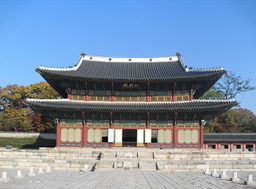
Changdok Palace
Changdok Palace is the best preserved of all seoul's Five remaining Palace. It was originally built as a detached palace of the chosun Kingdom.
Ch'angdok Palace, probably the favorite of most visitors is located east of Kyongbok Palace. It is best known for the Secret Garden, or Piwon composed of 78 acres of gardens superbly landscaped with pavilions, ponds, and wooded areas
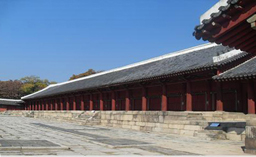
Jongmyo shrine
Jongmyo is a Confucian shrine dedicated to the memorial services for the deceased kings and queens of the Korean Joseon Dynasty. According to UNESCO, the shrine is the oldest royal Confucian shrine preserved and the ritual ceremonies continue a tradition established since the 14th century. Such shrines existed during the Three Kingdoms of Korea period but only the shrines for the rulers of Joseon remain. The Jongmyo Shrine was added to
the UNESCO World Heritage list in 1995.

Suwon fortress
Suwonhwaseong fortress is the official fortress of Suwon-si, Gyeonggi-do, from the latter days of Joseon Period (1392-1910). The fortress began construction in 1794 and finished in 1796. it was built to show the King’s filial piety toward his father Jangheonseja, and also to build a new city with its own economic power. The fortress wall is 5.52km long and it has a great variety of military facilities you cannot find at other fortress. There are four gates in each direction, the north gate called Janganmun, the south gate called Paldalmun, the east gate, Changryongmun, and the west gate, Hwaseomun. A stream passes by the fortress, and where the water meets the fortress, they built Sumun gates.
Suwonhwaseong went through many turbulent times and damage, and in The june 25 Battle, many of the facilities became so damaged that they were just left that way. The fortress restoration initiative started in 1975, and finished in 1979. But from Paldalmun to Dongnamgakru, a space of 491 meters, has still not been renovated. The fortress became designated as Historical Monument No. 3, in January 1963, and in December 1997, it was designated on UNESCO’s World Cultural Asset.

The Korean Folk Village
The Korean Folk Village is a living museum that recreates the lifestyle of Choson Kingdom. Here in reconstructed farm houses, residences of the nobility, and other buildings of several centuries ago.
There are potters, weavers, blacksmiths, and other artisans who practice their trades in traditional fashion.
There are also 240 traditional homes and a small amphitheater for music and folk dances. Folk dances, musical performances, and ceremonies like traditional weddings are regularly scheduled in the amphitheater.

Suwon fortress
Suwonhwaseong fortress is the official fortress of Suwon-si, Gyeonggi-do, from the latter days of Joseon Period (1392-1910). The fortress began construction in 1794 and finished in 1796. it was built to show the King’s filial piety toward his father Jangheonseja, and also to build a new city with its own economic power. The fortress wall is 5.52km long and it has a great variety of military facilities you cannot find at other fortress. There are four gates in each direction, the north gate called Janganmun, the south gate called Paldalmun, the east gate, Changryongmun, and the west gate, Hwaseomun. A stream passes by the fortress, and where the water meets the fortress, they built Sumun gates.
Suwonhwaseong went through many turbulent times and damage, and in The june 25
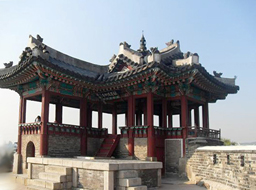
Battle, many of the facilities became so damaged that they were just left that way. The fortress restoration initiative started in 1975, and finished in 1979. But from Paldalmun to Dongnamgakru, a space of 491 meters, has still not been renovated. The fortress became designated as Historical Monument No. 3, in January 1963, and in December 1997, it was designated on UNESCO’s World Cultural Asset.
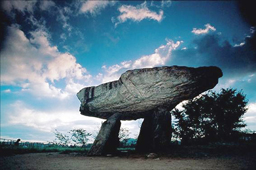
Ganghwa Island
Kangwha Island,located at the mouth of the Han River about 40 km west of Seoul,is the fifth largest island in Korea. It has been a strategic strong hold since ancient times.
Sightseeing highlights on the island are a huge dolmen attesting to burial methods during Neolithic times Chamsongdan Atar atop Manisan where tribute is paid to Korea's creation myth each year on National Foundation Day(oct,3) and Chondungsa, a temple that dates back to the Three Kingdom's Period about 1,600 years ago.
In addition to these historic sites,the local products,such as ginseng and rush mats make Kangwha Island a more fascinating destination
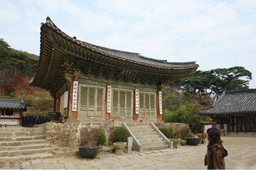
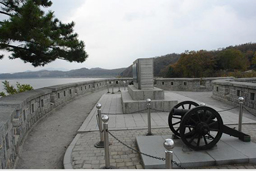

The Korean Folk Village
The Korean Folk Village is a living museum that recreates the lifestyle of Choson Kingdom. Here in reconstructed farm houses, residences of the nobility, and other buildings of several centuries ago.
There are potters, weavers, blacksmiths, and other artisans who practice their trades in traditional fashion.
There are also 240 traditional homes and a small amphitheater for music and folk dances. Folk dances, musical performances, and ceremonies like traditional weddings are regularly scheduled in the amphitheater.
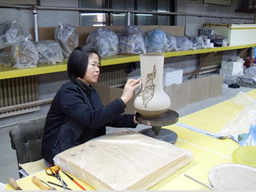
Icheon Ceramic village
The areas of Saeum-dong(village) and Sindun-myeon(town) are representative ceramic art villages of Icheon city, where there are many ceramic art companies. The ceramic artists were gathered to investigate the production technique of traditional ceramic wares, whose tradition had stopped. So it became a traditional center of ceramic art that continues artistic spirits.
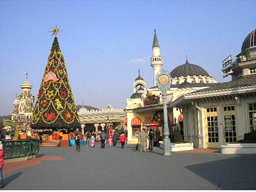
Everland theme park
Everland Resort is a theme park in Yongin, a city in Gyeonggi-do province, South Korea. Everland is South Korea's largest theme park. In 2007, Everland ranked tenth in the world for amusement park attendance[1]. Along with its main attractions, Everland also includes a zoo and a water park known as Caribbean Bay. Everland is operated by Samsung Everland, which is a subsidiary of the Samsung Group. Everland is often compared to Disneyland by those who have visited both parks, as some consider the architecture, scale, themes and general atmosphere to be very similar.
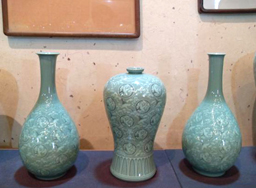
Icheon Ceramic village
The areas of Saeum-dong(village) and Sindun-myeon(town) are representative ceramic art villages of Icheon city, where there are many ceramic art companies. The ceramic artists were gathered to investigate the production technique of traditional ceramic wares, whose tradition had stopped. So it became a traditional center of ceramic art that continues artistic spirits.
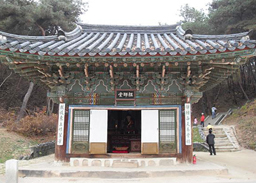
Sileuk Temple
The Silleuk sa Temple is immersed in the beauty of nature and is rich in history. Legend has it that the temple was founded by Saint Wonhyo during the reign of King Jinpyeong of the Silla Dynasty. The temple became famous with the death of Naongseonsa in 1376 during the Goryeo Dynasty. Silleuk sa Temple is also called the “Wall Temple” due to the multi-tiered tower that can be found in the temple.
Many people come to visit Silleuk sa Temple for the surrounding majestic scenery. (The temple houses 7 treasures and 1 tangible cultural relic.)
Silleuk sa Temple is a historical temple believed to have been founded by Saint Wonhyo during the Silla Dynasty. The Silleuk sa Temple is one of the only lakeside temples in Korea.
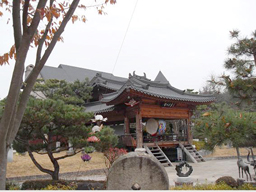
Mok-Ah Buddhist Museum
